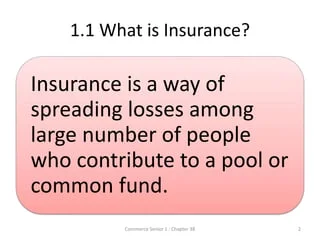Rumored Buzz on Pacific Prime
Rumored Buzz on Pacific Prime
Blog Article
Some Known Incorrect Statements About Pacific Prime
Table of ContentsThe Greatest Guide To Pacific PrimeThe Single Strategy To Use For Pacific PrimeThe 7-Second Trick For Pacific PrimeThe Main Principles Of Pacific Prime Our Pacific Prime Ideas

This is because the information were gathered for a period of strong economic efficiency. Of the estimated 42 million people that were without insurance, all yet about 420,000 (concerning 1 percent) were under 65 years old, the age at which most Americans come to be qualified for Medicare; 32 million were adults between ages 18 and 65, about 19 percent of all grownups in this age group; and 10 million were kids under 18 years of age, concerning 13.9 percent of all kids (Mills, 2000).
These price quotes of the variety of individuals without insurance are created from the yearly March Supplement to the Current Population Survey (CPS), performed by the Demographics Bureau. Unless or else kept in mind, national estimates of individuals without medical insurance and proportions of the populace with different type of coverage are based on the CPS, one of the most widely used source of price quotes of insurance protection and uninsurance prices.
Unknown Facts About Pacific Prime

Still, the CPS is especially valuable due to the fact that it produces annual price quotes fairly swiftly, reporting the previous year's insurance coverage approximates each September, and due to the fact that it is the basis for a consistent collection of estimates for greater than twenty years, enabling for analysis of trends in insurance coverage gradually. For these factors, as well as the substantial use the CPS in various other research studies of insurance protection that are offered in this record, we count on CPS estimates, with constraints noted.

The quote of the number of without insurance people broadens when a population's insurance coverage standing is tracked for several years. Over a three-year duration starting early in 1993, 72 million people, 29 percent of the U.S. https://www.huntingnet.com/forum/members/pacificpr1me.html. population, lacked protection for at the very least one month. Within a single year (1994 ), 53 million individuals experienced at least a month without insurance coverage (Bennefield, 1998a)
Six out of every 10 uninsured adults are themselves utilized. Although functioning does boost the chance that one and one's family members will have insurance, it is not a guarantee. Also participants of families with look at this web-site two full time breadwinner have almost a one-in-ten possibility of being without insurance (9.1 percent without insurance price) (Hoffman and Pohl, 2000).
Unknown Facts About Pacific Prime
New immigrants make up a substantial proportion of people without medical insurance. One analysis has actually connected a significant section of the current development in the dimension of the U.S. without insurance populace to immigrants that showed up in the country in between 1994 and 1998 (Camarota and Edwards, 2000). Recent immigrants (those who involved the USA within the past four years) do have a high rate of being uninsured (46 percent), yet they and their kids make up just 6 percent of those without insurance country wide (Holahan et al., 2001).
The relationship between medical insurance and access to care is well developed, as documented later on in this chapter. Although the partnership between medical insurance and health and wellness outcomes is neither straight nor simple, a considerable scientific and wellness solutions research study literature web links medical insurance protection to better accessibility to care, much better quality, and enhanced individual and population health and wellness standing.
Levels of evaluation for examining the impacts of uninsurance. It concentrates especially on those without any type of wellness insurance for any kind of length of time.
The Facts About Pacific Prime Revealed
The issues faced by the underinsured are in some areas comparable to those faced by the uninsured, although they are usually much less serious. Health insurance policy, however, is neither necessary neither sufficient to obtain access to medical services. The independent and direct impact of health and wellness insurance policy protection on access to wellness services is well developed.
Others will get the health and wellness treatment they require also without health insurance policy, by spending for it out of pocket or seeking it from carriers who use treatment complimentary or at extremely subsidized rates. For still others, medical insurance alone does not ensure receipt of treatment since of various other nonfinancial barriers, such as an absence of health and wellness care carriers in their neighborhood, restricted access to transport, illiteracy, or linguistic and cultural differences.
The Ultimate Guide To Pacific Prime
Official research about uninsured populaces in the United States dates to the late 1920s and early 1930s when the Committee on the Cost of Medical Care produced a series of reports concerning funding doctor workplace visits and hospital stays. This problem ended up being significant as the varieties of medically indigent climbed during the Great Depression.
Report this page